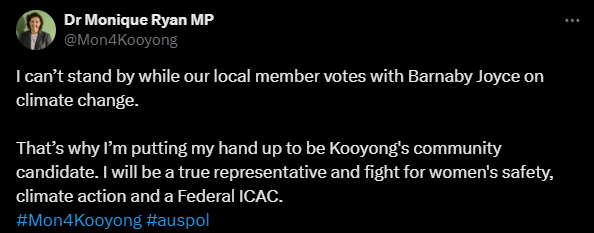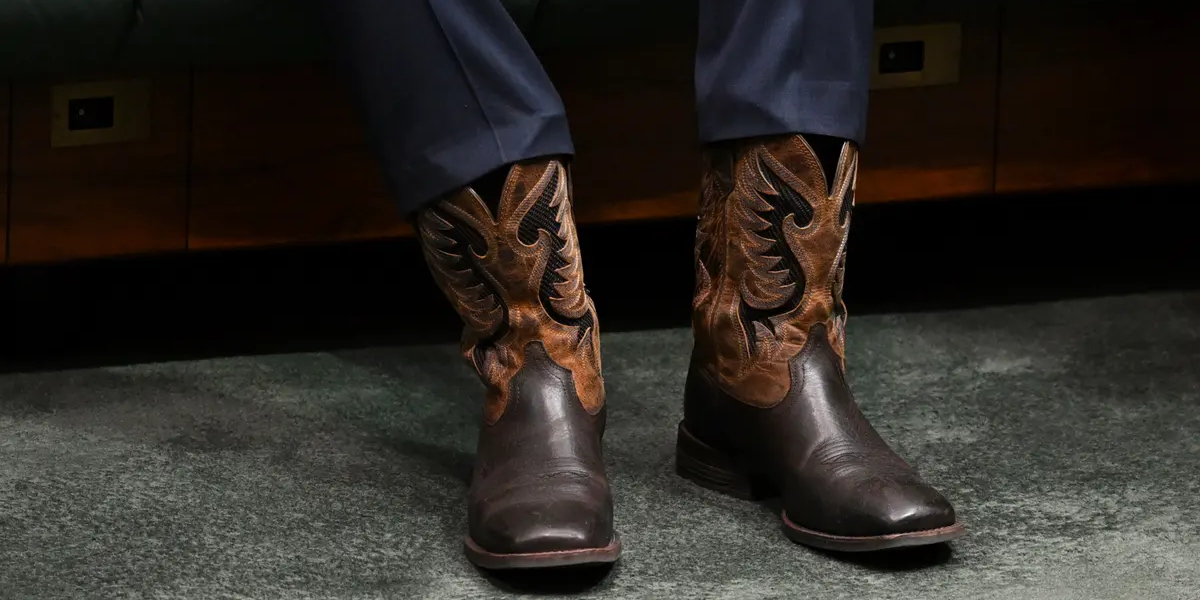As another World Environment Day rolls around, climate action is firming to be a major election battleground, meaning the New England will likely be the subject of intense hate campaign by ill-informed city campaigners yet again.
The last federal election saw most Climate 200 campaigners, Greens and many in the Labor Party repeatedly refer to New England as an ill-informed backwater with no values, often citing the line “vote Liberal, get Barnaby” in their efforts to unseat moderate Liberal MPs.
Despite the fact the New England both lives the reality of Climate Change impacts more than anyone in the Climate 200 targeted inner city seats, and does more to combat the issue – including enthusiastic local support for most of the developments in the state’s largest Renewable Energy Zone – New Englanders were subjected to some intense hate online, and defamation by candidates at events.
For example, Member for Goldstein in inner Melbourne, Zoe Daniel, outright said “with respect to the people of New England, those values are not our values” at a candidate forum that began with teenagers talking about the climate anxiety they experienced because they watched the floods in Lismore on the television.
While the then candidate for Kooyong, Monique Ryan, used Barnaby Joyce as the boogey man in her candidate announcement, as did Wentworth candidate Allegra Spender.

Energy front and centre
The next federal election, which must be held by May 2025, is again setting for a fight over energy policy. And yet again, our local member is front and centre, spruiking nuclear, and opposing the renewables the vast majority of his constituents support so much he now refuses to wear RM Williams boots. (RM Williams is now owned by Andrew Forrest, who also owns Squadron Energy, which owns the Boorolong Wind Farm project near Armidale and Sapphire Solar Farm near Glen Innes.)
The nation is in a strong position to create “substantial amounts” of renewable energy from solar and wind given the abundance of available space, according to Prime Minister Anthony Albanese, who was criticising the opposition’s “opposition to renewables”.
“We need to transition and we need to transition quickly, I’m convinced we can do that,” he told the Democracy Sausage podcast.
But the government has been criticised for relying on gas as a transition fuel and not winding down coal fast enough, while the industry criticised the debate as a “distraction”.
More solar, less nuclear chatter
The Clean Energy Council’s Australian Large-Scale Solar and Storage Summit yesterday heard local companies have invested heavily in ways to store renewable energy but were falling short when it came to projects that generated solar power on an industrial scale.
Firms including LONGi, Tesla and Genex urged investors to back more solar, wind and hydro projects to replace coal-powered electricity generation or warned they could risk losing momentum.
The call came after the Clean Energy Council released a report showing renewable energy combined with storage would be the fastest and cheapest way for Australia to decarbonise its electricity supply and despite a Lowy Institute poll that this week showed one in four respondents strongly supported nuclear energy.
Clean Energy Council chief executive Kane Thornton told the summit claims nuclear power plants would cut carbon emissions faster were unproven and could derail more efficient efforts to cut pollution.
Mr Thornton said analysis of nuclear projects showed the technology would be “six times more expensive” than renewable alternatives and would not be available in Australia for another two decades.
“A protracted debate about nuclear power will be yet another distraction,” he said.
Genex Power chief executive Craig Francis said some delays to large-scale solar investments were due to long approval processes and a lack of transparency and certainty for developers.
Some state governments were making the process easier, he said, but renewable energy investments should be prioritised nationally.
“The key bottleneck is more at the federal level,” Mr Francis told attendees.
Coalition puts it all on nuclear
Opposition Leader Peter Dutton is pushing his nuclear-heavy climate policy, agitated for since the last election by a core group of Nationals including Barnaby Joyce.
Mr Dutton has been critical of the government for failing to bring down power prices with its renewables targets. He will unveil a costed plan that would put nuclear sites at half a dozen places across Australia in areas that already have coal and gas stations. Exactly where is not yet known, with Mr Dutton saying he will reveal that information “in due course” but New England is not on the list of suspected locations.
“If you’ve got an end-of-life coal-fired power station, it’s already got the poles and wires there. So, when the energy is generated, you can distribute that on the existing poles and wires,” Mr Dutton said.
“The latest technology, zero-emissions technology, nuclear, is something that’s now used by 19 of the 20 biggest economies in the world, except for Australia.”
The plan has already drawn criticism from the government and independent MPs.
Labor argues renewables are the cheapest form of energy and nuclear power would be too expensive.
Climate 200 candidate Allegra Spender, who holds Malcolm Turnbull’s old seat of Wentworth in the Bondi area of Sydney, branded the policy “a Trojan horse for more coal and gas, not a serious energy and climate policy”.
Climate 200 back again
It’s against this backdrop that independents backed by Climate 200 are hoping to build on their success at the last federal election.
Billionaire businessman Simon Holmes a Court helped fund campaigns for various ‘teal’ independents and successfully backed six new MPs and one new senator through the fund. Those MPs have performed fairly poorly for the most part, and will be facing a tough re-election campaign, particularly with significant seat changes in Melbourne from a redistribution.
Climate 200 now has its next targets in sight, with the battleground set for the blue ribbon Liberal seat of Bradfield in Sydney’s wealthy north shore and the former Nationals stronghold of Cowper on the NSW mid-north coast.
Independent campaigns in those electorates received $42,000 and $17,000 respectively as the focus shifts to where previous challengers lost narrowly, Climate 200 executive director Byron Fay said.
In 2022, Liberal Paul Fletcher copped a more than 15 per cent swing against him in Bradfield and only held onto the seat by about four per cent after being challenged by conservationist Nicolette Boele.
The Nationals also had a more than seven per cent against swing in Cowper, with Pat Conaghan just staving off grassroots independent Caz Heise.
The identification of these seats may have been premature, as the report detailing the proposed redistribution of electorates in NSW, which is very likely to change the borders of many electorates, is due to be published within a week.
Top image: Barnaby’s boots in parliament this week (Lukas Coch/AAP)
Like what you’re reading? Support The New England Times by making a small donation today and help us keep delivering local news paywall-free. Donate now

